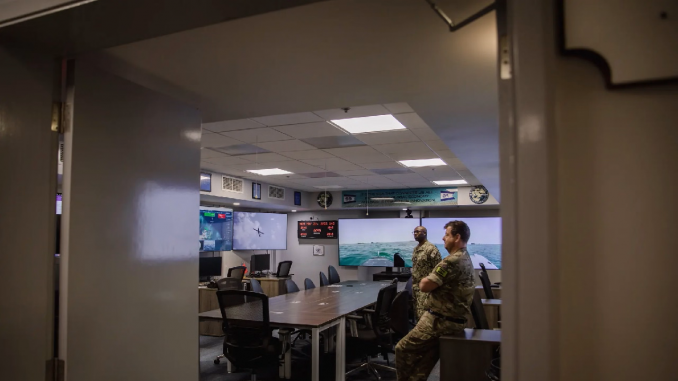
Last week at the White House, President Biden met with the leaders of small Pacific Island nations, some with a population as small as 1,700 people. Last year, Secretary of State Anthony Blinken visited Fiji, a nation of less than one million, in the highest level U.S. visit to that nation in at least 36 years. If you’re wondering why Biden and his top diplomat are spending so much time recently courting small island nations in the Pacific, look no further than China, and the massive threat that Chinese imperialism in the Pacific poses for the U.S. ruling class.
With the implementation of the Belt and Road Initiative nearly a decade ago, China has been pushing its way into the ranks of imperialist powers, expanding its economic tentacles throughout the Pacific rim, central Asia and Africa, and even into Latin America. With the Belt and Road initiative and the simultaneous expansions of its military activity, China is challenging the original imperialist powers, including the U.S., that have dominated the globe for nearly two hundred years.
As China increases its military development and expansion, and continues to generally try to intimidate and bully its neighbors in the Pacific rim, the United States is doing everything possible to try to contain China’s expansion. Last year Biden met with leaders of India, Japan and Australia to create the so-called Quad to help encourage and maintain “a region that is governed by accepted rules and norms.” Earlier this year, the U.S. agreed to sell Australia three to five nuclear submarines. And high-level U.S. officials have met with Taiwanese leaders, showing support for Taiwan in the face of China’s threatening posture.
But the clearest sign yet that the U.S. is preparing directly for conflict with China came in news that the U.S. Navy is rethinking not only weapons but entire naval strategies in preparation for war with China. War games have shown that the current Navy would sustain heavy losses of both ships and personnel in any conflict with China. Naval analysts and officers, concerned that the U.S. is still maintaining a “20th century navy,” want more innovation, more drone weapons, more bases, and better distribution of weapons and ships that will allow them to fight China more successfully. They want to shift U.S. military spending away from big ships that look so impressive and have made billions for shipbuilding elements of the military-industrial complex, and into more high-tech, strategically targeted systems and strategies that could contain Chinese might with fewer losses to the U.S. military.
The writing is on the wall, and getting clearer with every passing month.
In the years before World War I, it was clear that Europe’s imperialist powers were rolling towards war as they carved up Africa, built larger and deadlier weapons, and elbowed each other for control of resources and markets. In the years leading into World War II, it was obvious that the United States and Japan, both imperialist powers struggling to control the Pacific rim and Ocean, were on a collision course, driven again by pursuit of resources, markets and military expansion. And today it is clear that the ruling capitalists of the United States and China are also on a collision course, driven by the same basic forces that drove imperialist power one hundred years ago, which today includes the struggle for control over economic tech hubs like Taiwan. The capitalists and the states that they dominate will fight again and again over these same basic things.
But we are not the capitalists, and we are not the political leaders who work for them. If war does come, it is our lives that will be lost, shattered, or thrown into chaos. The working people of China and the United States have no interest in this war, and should not allow ourselves to be led down this path.




